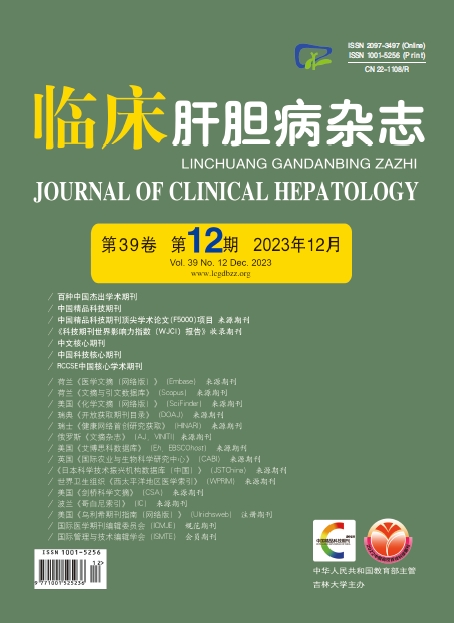| [1] |
SPRINGFELD C, FERRONE CR, KATZ MHG, et al. Neoadjuvant therapy for pancreatic cancer[J]. Nat Rev Clin Oncol, 2023, 20( 5): 318- 337. DOI: 10.1038/s41571-023-00746-1. |
| [2] |
CUBILLOS-RUIZ JR, BETTIGOLE SE, GLIMCHER LH. Tumorigenic and immunosuppressive effects of endoplasmic reticulum stress in cancer[J]. Cell, 2017, 168( 4): 692- 706. DOI: 10.1016/j.cell.2016.12.004. |
| [3] |
RAINES LN, ZHAO HX, WANG YZ, et al. PERK is a critical metabolic hub for immunosuppressive function in macrophages[J]. Nat Immunol, 2022, 23( 3): 431- 445. DOI: 10.1038/s41590-022-01145-x. |
| [4] |
CHEN X, CUBILLOS-RUIZ JR. Endoplasmic reticulum stress signals in the tumour and its microenvironment[J]. Nat Rev Cancer, 2021, 21( 2): 71- 88. DOI: 10.1038/s41568-020-00312-2. |
| [5] |
SAMANTA S, YANG SH, DEBNATH B, et al. The hydroxyquinoline analogue YUM70 inhibits GRP78 to induce ER stress-mediated apoptosis in pancreatic cancer[J]. Cancer Res, 2021, 81( 7): 1883- 1895. DOI: 10.1158/0008-5472.CAN-20-1540. |
| [6] |
SIEGEL RL, MILLER KD, WAGLE NS, et al. Cancer statistics, 2023[J]. CA A Cancer J Clinicians, 2023, 73( 1): 17- 48. DOI: 10.3322/caac.21763. |
| [7] |
WOOD LD, CANTO MI, JAFFEE EM, et al. Pancreatic cancer: Pathogenesis, screening, diagnosis, and treatment[J]. Gastroenterology, 2022, 163( 2): 386- 402.e1. DOI: 10.1053/j.gastro.2022.03.056. |
| [8] |
CHANG XD, LI HY, CHEN J, et al. The role of lncRNA GAS5 in cell apoptosis, migration and invasion of AsPC-1 pancreatic cancer cell[J]. Clin J Med Offic, 2022, 50( 6): 599- 602. DOI: 10.16680/j.1671-3826.2022.06.15. 常旭东, 李宏宇, 陈江, 等. 长链非编码RNA GAS5对胰腺癌AsPC-1细胞凋亡、迁移及侵袭能力调控作用[J]. 临床军医杂志, 2022, 50( 6): 599- 602. DOI: 10.16680/j.1671-3826. 2022.06.15.
|
| [9] |
TEMPERO MA. NCCN guidelines updates: Pancreatic cancer[J]. J Natl Compr Canc Netw, 2019, 17( 5.5): 603- 605. DOI: 10.6004/jnccn.2019.5007. |
| [10] |
ZHANG TP, LIU YZ, REN B. Current status and challenges of total neoadjuvant therapy for pancreatic cancer[J]. Chin J Dig Surg, 2022, 21( 4): 461- 464. DOI: 10.3760/cma.j.cn115610-20220320-00141. |
| [11] |
|
| [12] |
LI ZX, GE Y, DONG J, et al. BZW1 facilitates glycolysis and promotes tumor growth in pancreatic ductal adenocarcinoma through potentiating eIF2α phosphorylation[J]. Gastroenterology, 2022, 162( 4): 1256- 1271.e14. DOI: 10.1053/j.gastro.2021.12.249. |
| [13] |
ZHANG JF, YANG JY, LIN CY, et al. Endoplasmic reticulum stress-dependent expression of ERO1L promotes aerobic glycolysis in pancreatic cancer[J]. Theranostics, 2020, 10( 18): 8400- 8414. DOI: 10.7150/thno.45124. |
| [14] |
LIU Z, LIU GL, HA DP, et al. ER chaperone GRP78/BiP translocates to the nucleus under stress and acts as a transcriptional regulator[J]. Proc Natl Acad Sci USA, 2023, 120( 31): e2303448120. DOI: 10.1073/pnas.2303448120. |
| [15] |
NIU ZY, WANG MY, ZHOU L, et al. Elevated GRP78 expression is associated with poor prognosis in patients with pancreatic cancer[J]. Sci Rep, 2015, 5: 16067. DOI: 10.1038/srep16067. |
| [16] |
MARTINEZ-USEROS J, GEORGIEV-HRISTOV T, BORRERO- PALACIOS A, et al. Identification of poor-outcome biliopancreatic carcinoma patients with two-marker signature based on ATF6α and p-p38 STARD compliant[J]. Medicine, 2015, 94( 45): e1972. DOI: 10.1097/MD.0000000000001972. |
| [17] |
VANDE VOORDE J, SABUNCUOĞLU S, NOPPEN S, et al. Nucleoside-catabolizing enzymes in mycoplasma-infected tumor cell cultures compromise the cytostatic activity of the anticancer drug gemcitabine[J]. J Biol Chem, 2014, 289( 19): 13054- 13065. DOI: 10.1074/jbc.M114.558924. |
| [18] |
GELLER LT, BARZILY-ROKNI M, DANINO T, et al. Potential role of intratumor bacteria in mediating tumor resistance to the chemotherapeutic drug gemcitabine[J]. Science, 2017, 357( 6356): 1156- 1160. DOI: 10.1126/science.aah5043. |
| [19] |
LU D, WANG JX, SHI XY, et al. AHNAK2 is a potential prognostic biomarker in patients with PDAC[J]. Oncotarget, 2017, 8( 19): 31775- 31784. DOI: 10.18632/oncotarget.15990. |
| [20] |
WANG XT, DOU XL, REN XX, et al. A ductal-cell-related risk model integrating single-cell and bulk sequencing data predicts the prognosis of patients with pancreatic adenocarcinoma[J]. Front Genet, 2021, 12: 763636. DOI: 10.3389/fgene.2021.763636. |
| [21] |
LIU Y, SHAO ML, WU Y, et al. Role for the endoplasmic reticulum stress sensor IRE1alpha in liver regenerative responses[J]. J Hepatol, 2015, 62( 3): 590- 598. DOI: 10.1016/j.jhep.2014.10.022. |










 DownLoad:
DownLoad:




